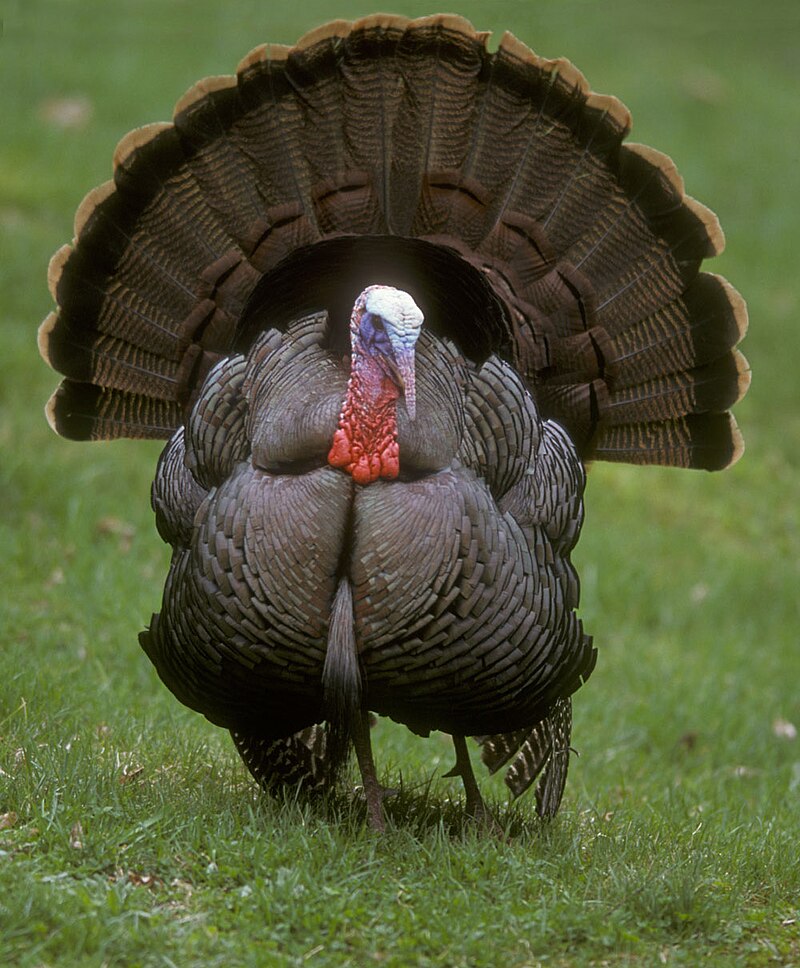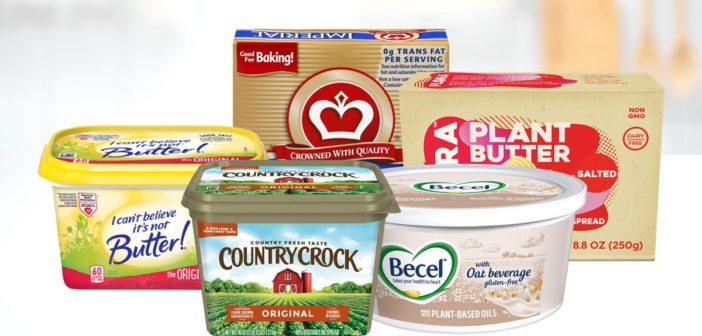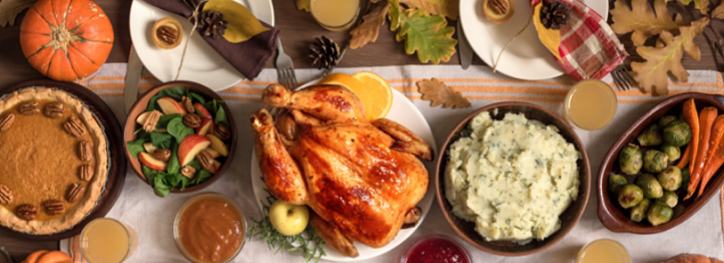Supply chain issues have caused empty shelves. And coupled with the effects of inflation, many of us have reasonable cause for concern. Will we find all of the food for our Thanksgiving table, and at what price?
A Rise in Prices
Inflation has had a major impact on food prices in 2022. The cost of all food has increased by over 11% in September since 2021.
 And we can expect the same will be true for our Thanksgiving dinners this year. But, despite inflation’s unprecedented rise, there’s reason to be slightly optimistic as we draw closer to Turkey Day: U.S. consumer inflation dropped to 7.7% year-over-year in October.
And we can expect the same will be true for our Thanksgiving dinners this year. But, despite inflation’s unprecedented rise, there’s reason to be slightly optimistic as we draw closer to Turkey Day: U.S. consumer inflation dropped to 7.7% year-over-year in October.
That’s a big relief on what has otherwise been an upward trend of price increases since January 2022. However, food is still very expensive. And many products will be served on our Thanksgiving table in just a few short days.
Here are a few of the biggest increases we’ve seen:
The Main Event – Turkey
The price of Thanksgiving turkeys are currently up 17% from this time last year, and this is not surprising considering all that’s happened in the turkey world this year. Not only has inflation caused prices to rise, but transportation costs are also up and supply chain issues are still in effect.
 Furthermore, the avian flu has not only killed turkeys but has also forced commercial operations to shut down to contain the spread. So should we be worried? Not exactly. However, do expect to pay more for your turkey. My turkey, which I purchased last week, went up to 69 cents, compared to 49 cents last year. It also is a good idea to shop early, especially if you’re looking for a fresh turkey, but we recommend buying frozen because it’s juicier and has just as many nutrients as fresh.
Furthermore, the avian flu has not only killed turkeys but has also forced commercial operations to shut down to contain the spread. So should we be worried? Not exactly. However, do expect to pay more for your turkey. My turkey, which I purchased last week, went up to 69 cents, compared to 49 cents last year. It also is a good idea to shop early, especially if you’re looking for a fresh turkey, but we recommend buying frozen because it’s juicier and has just as many nutrients as fresh.
Learn our best tips on how to properly clean, prepare, and cook a Thanksgiving turkey here.
Baking/Bakery Goods
Your apple and pumpkin pies this year have just gotten more expensive. The consumer price index reports state that the prices for margarine, flour and prepared flour mixes, and frozen and refrigerated bakery products have seen the biggest jump from last year at a 16.2% increase.
Eggs have also seen a sharp rise, hitting a record-high price in the Midwest at $4.18 a dozen. Even if you don’t live in the Midwest, you’ve probably still seen an increase since most grocery stores are selling a dozen eggs at 200% over the average price of $1.45.
Margarine
Margarine, an alternative to butter and used in many baked goods, has seen one of the largest price increases in the last year. Up 44% in cost from last September, there are several reasons this could be the case.
 An increase in demand is one as many are starting to realize that most margarine is made from vegetable oils and contains polyunsaturated and monounsaturated fats, making it heart-healthy.
An increase in demand is one as many are starting to realize that most margarine is made from vegetable oils and contains polyunsaturated and monounsaturated fats, making it heart-healthy.
The other reason for this large bump in price is because of the war in Ukraine. Most of the vegetable oils used in margarine production come from Ukrainian imports, and with the current war’s impact on exports, the cost of these oils has increased dramatically. Indonesia’s ban on palm oil exports also plays a part, with supply down and demand up, creating strain on the supply chain.
Our Thanksgiving dinner is a great illustration of how interconnected our global food system is. Even with the war in Ukraine, we are still impacted at our own local grocery stores.
How to Shop Smarter, Not Harder
Now that we’ve looked at what will cost us the most this Thanksgiving compared to previous years, let’s talk about what we can do to still celebrate the holiday at a price we can afford.
Fresh vs. Frozen
We’ve all heard the saying, “fresh is best.” However, this is super misleading as it’s not always the case.
 When a vegetable or fruit is picked, there are a lot of steps in the supply chain, including washing and packaging to name a few, that it must go through before reaching our grocery store shelves and, eventually, our fridges at home.
When a vegetable or fruit is picked, there are a lot of steps in the supply chain, including washing and packaging to name a few, that it must go through before reaching our grocery store shelves and, eventually, our fridges at home.
During each of these steps, the fruit or vegetables loses a bit more of their nutrients. However, when fruit and vegetables are picked and sold as frozen, they’re frozen almost right away, locking in these nutrients. This makes frozen fruit and vegetables the same nutritionally if not more nutritious than fresh.
So, if you find it more affordable to buy your corn or beans frozen—go for it!
Look for grocery stores that are lowering prices
This time of year, many grocery stores offer deals and discounts on food for Thanksgiving. For example, my own grocery store has a rewards system, where every time you shop there, you earn points. If you earn enough points before Thanksgiving, you receive a free turkey. Another grocery store in my town is offering an “early bird” sale, where all turkeys are over half off right now and will increase the closer you get to the holiday, further proving our point to shop early!
Aldi has made major news recently because they are matching their 2019 prices on some Thanksgiving-related foods this year. This is an attempt to help consumers have the same Thanksgiving they’ve had in the past. The President of Aldi, Dave Rinaldo, was quoted saying:
“Providing amazing products at the absolute lowest prices is what we’ve always done, and we know right now that’s more important than ever… We expect to welcome tens of millions of customers in our stores this Thanksgiving season, and we want them to know they can count on us.
So why not attempt that additional side dish this year, or invite over a few more friends or family members? You can rest easy knowing ALDI has your back this Thanksgiving, and beyond.”
Walmart is also returning to 2021 prices on some Thanksgiving foods. This includes turkey, ham, potatoes, stuffing, and pumpkin pie.
Key Take-Aways
- Most foods, like turkey, eggs, flour, and margarine, will cost more this Thanksgiving. Follow the sales and discounts to ensure you’re getting the best price.
- Get your turkey NOW! This will help you not only get a better price but also ensure you actually get a turkey for your dinner. Might as well grab one and put it in your freezer for Christmas while you’re at it.
- Ask your local grocer if they’re planning on running any sales or discounts during the holiday season. More than likely, they’ll say yes and you can plan your shopping around those times.
- Give frozen produce a chance. Not only are these products regularly affordable and prone to frequent sales, these fruits and veggies are picked and flash-frozen at peak freshness, so you’re guaranteed a flavorful side. Consider buying frozen corn, peas, green beans, cranberries, cauliflower, and butternut squash.
- Enjoy the holiday with your friends and family! Remember, that no matter what we are finally able to spend the holidays with our loved ones again, so enjoy the time together.





 In response to the dire situation, national leaders responded by negotiating the Black Sea Grain Initiative, which allowed a resumption of shipments under controlled conditions.
In response to the dire situation, national leaders responded by negotiating the Black Sea Grain Initiative, which allowed a resumption of shipments under controlled conditions. Prior to the recent Ukraine announcement, data from the United Nations already had shown the progress being made. UN estimated that more than 10.4 million tons of grains and other foods have shipped from Ukraine ports since the Initiative was signed in July.
Prior to the recent Ukraine announcement, data from the United Nations already had shown the progress being made. UN estimated that more than 10.4 million tons of grains and other foods have shipped from Ukraine ports since the Initiative was signed in July.





 The Nature Conservancy is pleased to present its Global Regenerative Food Systems Director,
The Nature Conservancy is pleased to present its Global Regenerative Food Systems Director, 
 Supporting producers to mulch-till the residue instead of burning helps to clear the air and keeps people healthy. This also constitutes a regenerative ag practice which, in turn, will improve soil health, nutrient content and water management — all which lead to better outcomes for people and nature.
Supporting producers to mulch-till the residue instead of burning helps to clear the air and keeps people healthy. This also constitutes a regenerative ag practice which, in turn, will improve soil health, nutrient content and water management — all which lead to better outcomes for people and nature.